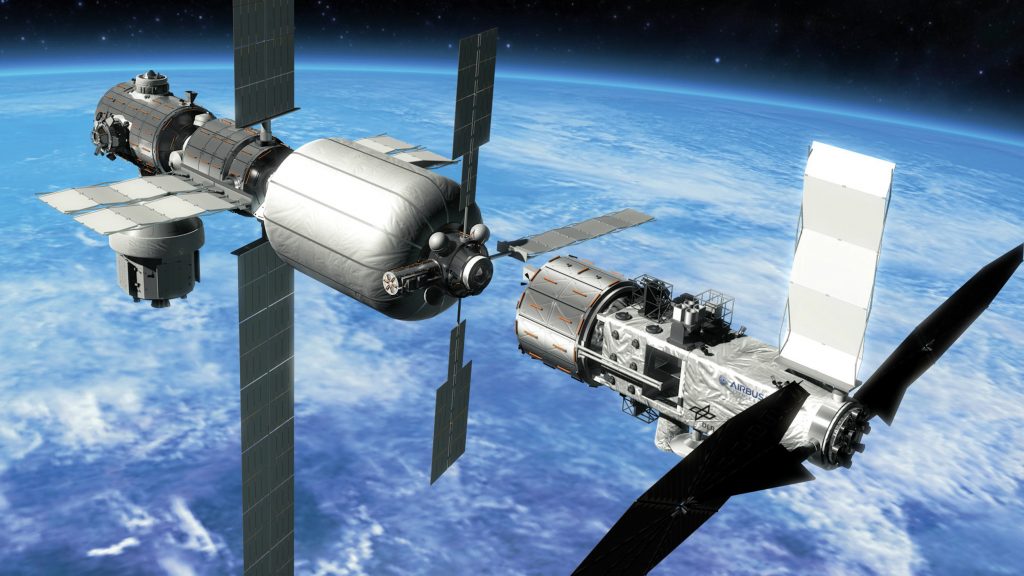Orbital Hub concept with Free Flyer
The Orbital Hub consists of two main parts: the base and the free-flying module (called the Free Flyer). The docking module on the base is the approach point for any crew or cargo vehicles. It contains a cupola, crew training equipment and subsystems for communications, data storage and an emergency propulsion system. The service module houses the basis functionalities (mainly power supply and thermal control), a toilet and the external reaction wheels for aligning the platform. The expandable habitat is based on the BA330 by Bigelow Aerospace. It contains three crew quarters, a kitchen, working spaces, manufacturing units, laboratory cabinets and general storage facilities. It includes a small airlock so that EVAs can be conducted in the event of an emergency.
The Free Flyer has two separate areas: a pressurised laboratory and a non pressurised area with the external platform and service module. The pressurised laboratory can be entered by the crew when it is docked to the base. It has enough space to accommodate payloads (e.g. for materials science) and an airlock to equip the attached external platform. This external platform provides standardised interfaces with the payloads and is serviced by a robotic manipulator. The service module mainly houses the energy, thermal, data and drive systems of the Free Flyer.
The Free Flyer is the active element of the Orbital Hub during the assembly phase and manoeuvring flight. An electric propulsion system also guarantees conditions that are as undisturbed as possible and high-quality weightlessness during the free flight phases. The Orbital Hub would provide a cost-effective way of continuing human spaceflight in Low Earth Orbit (LEO), and would be a reliable base for long-term space exploration by astronauts beyond LEO.
German Aerospace Center (DLR)
Stephan Jahnke · E-Mail: stephan.jahnke@dlr.de · DLR.de/en
